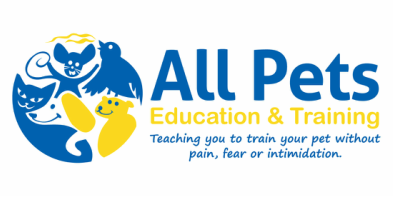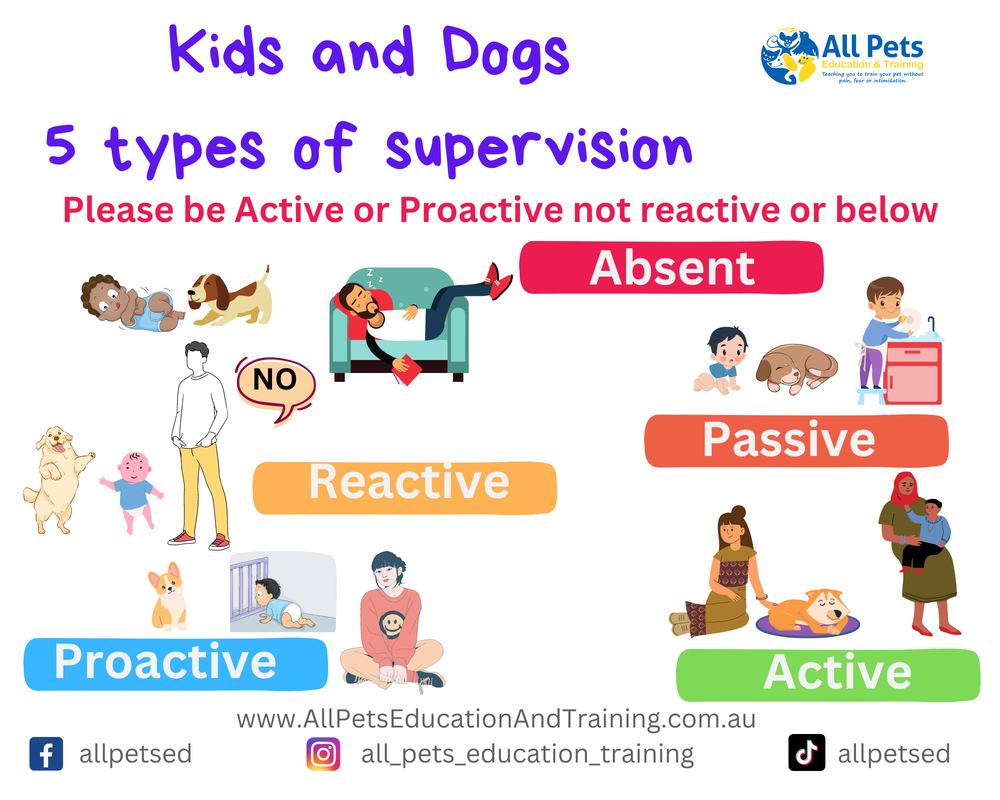Kids & Dogs
~ Every year, nearly 2.8 million children are bitten by a dog. Boys are bitten nearly twice as often as girls, and children between 5 and 9 years old are the most at risk. Most of these bites come from a dog that belongs to the family or a friend ~
“Living with kids and dogs...without losing your mind” Colleen Pelar, CPDT
OK, I hope I haven’t scared you off; however, this is the true reality.
With proper supervision, rules and guidance, there is no reason you cannot have both a dog and child living harmoniously and without conflict.
Education & Supervision are the key to preventing injuries.
Teach your child
The youtube link "I speak doggie" at the bottom of this page, is great for kids to watch.
Learn and Look for signs of stress in dogs
When interacting with any dog, it is vital that you are very aware of what the dog is communicating to you. It is fairly easy to identify a dog that clearly doesn’t want you to approach; it will bark, growl, tuck its tail, hide, run away or roll over onto its back.
However, dogs may show more subtle signs of stress, even while you are petting them. These warning signs indicate that the dog is uncomfortable and may include:
· Ears pulled back
· Lip licking
· Paw raised
· Leaning away
· Dilated pupils
· Crouching down
· Lifting lip (showing canines or other teeth)
· Urinating while interacting with you
· Avoiding eye contact/looking away
· Hackles raised (hair on back of neck standing up)
· Scratching more than normal
· Drinking more than normal
It is important to know when to back off and when it is OK to continue interacting with the dog.
If you witness these signals, stop petting the dog, and move away. If the dog wants to continue the interaction they will approach you.
You can find some great easy to understand pictures for children at Lili Chin's doggy drawings website.
They cover the do's and don'ts of child/dog interactions, as well as give the kids easy to understand pictures of canine body language.
Always give the dog a place to go that is off limits to children – the off limits rule must be reinforced with the children. The dog needs to be sure, that if he/she requires some kid free time, they are able to get it. A crate is a suitable area for this - it is also portable so you can take with you to friends houses, picnics and camping etc.
Please take the time to explore the Liam J Perk Foundations webpage. This page has a huge amount of information regarding kids and dogs.
Check out some games Kids & Dogs can play together.
Dr Sophia Yin has free downloads for how kids should and shouldn't behave around dogs - they are easy for children to understand. Put them on the fridge at child height to remind them every day.
The Video below is a great link for kids to watch.
- To approach a dog in a safe & non-threatening manner (this includes your dog and any other dog they may interact with).
- First and foremost (every single time), if the dog is with its owner, ask if it is OK to pet the dog before doing so. If the dog is not with its owner, it is best to avoid an interaction.
- Teach the child to approach at a normal speed (not overly slow or fast) with a curve and side on (not front on). They should be standing upright (not bent over with an arm extended as they usually are).
- Teach your child to not lean over the dog, or pat them on the head (dogs don’t like that).
- Allow the dog to approach you, rather than you going to it.
- Avoid staring at the dog (direct eye contact)
- Never put your face close to the dog’s face.
- Talk in a friendly, calm tone.
- Teach the child to be calm around dogs, not to flap their arms and squeal.
- Discourage running.
- Encourage a 5 second pat rule – Pat the dog 5 seconds and then stop, if the dog wants the child to continue they will move toward the child, if not, they will move away, If the dog moves away, the child should not follow.
The youtube link "I speak doggie" at the bottom of this page, is great for kids to watch.
Learn and Look for signs of stress in dogs
When interacting with any dog, it is vital that you are very aware of what the dog is communicating to you. It is fairly easy to identify a dog that clearly doesn’t want you to approach; it will bark, growl, tuck its tail, hide, run away or roll over onto its back.
However, dogs may show more subtle signs of stress, even while you are petting them. These warning signs indicate that the dog is uncomfortable and may include:
· Ears pulled back
· Lip licking
· Paw raised
· Leaning away
· Dilated pupils
· Crouching down
· Lifting lip (showing canines or other teeth)
· Urinating while interacting with you
· Avoiding eye contact/looking away
· Hackles raised (hair on back of neck standing up)
· Scratching more than normal
· Drinking more than normal
It is important to know when to back off and when it is OK to continue interacting with the dog.
If you witness these signals, stop petting the dog, and move away. If the dog wants to continue the interaction they will approach you.
You can find some great easy to understand pictures for children at Lili Chin's doggy drawings website.
They cover the do's and don'ts of child/dog interactions, as well as give the kids easy to understand pictures of canine body language.
Always give the dog a place to go that is off limits to children – the off limits rule must be reinforced with the children. The dog needs to be sure, that if he/she requires some kid free time, they are able to get it. A crate is a suitable area for this - it is also portable so you can take with you to friends houses, picnics and camping etc.
Please take the time to explore the Liam J Perk Foundations webpage. This page has a huge amount of information regarding kids and dogs.
Check out some games Kids & Dogs can play together.
Dr Sophia Yin has free downloads for how kids should and shouldn't behave around dogs - they are easy for children to understand. Put them on the fridge at child height to remind them every day.
The Video below is a great link for kids to watch.

